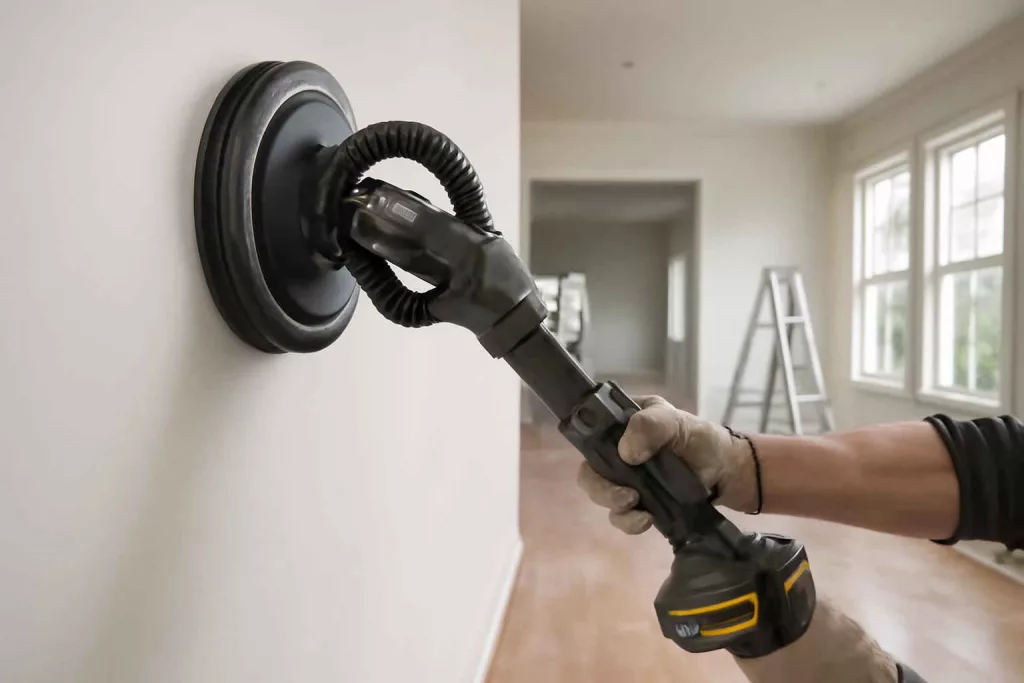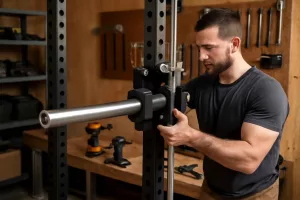When tackling wall finishing tasks, a quality cordless drywall sander can make all the difference in achieving smooth, professional results. Unlike traditional hand sanding tools, a cordless model offers freedom of movement, reduced fatigue, and consistent performance. Whether you’re a seasoned DIYer updating living room walls or a first-time renovator smoothing new drywall, choosing the right battery-powered drywall sander streamlines the process and elevates your craftsmanship.
Modern cordless drywall sanders combine powerful motors, advanced dust collection systems, and lightweight designs to ensure efficient sanding without leaving behind a haze of drywall dust. If you’re in the market for a reliable cordless drywall sander, it’s essential to compare runtime, ergonomics, and pad compatibility across top brands. Many homeowners who’ve used low vibration angle grinders to prep surfaces find that a dedicated wall sander significantly reduces effort on drywall seams and corners.
Why Choose a Cordless Drywall Sander for Home Renovation
Switching to a cordless drywall sander removes the hassle of extension cords and allows you to move freely from room to room. Battery-powered sanders also reduce trip hazards in busy workspaces, improving safety. Many models feature variable speed controls, so you can adjust sanding aggressiveness for different stages—from initial material removal to fine finish work. This flexibility makes cordless wall sanders ideal for projects ranging from new drywall installation to minor touch-ups before painting.
Additionally, the integrated dust collection systems found on modern cordless drywall sanders capture up to 90% of dust at the point of contact. This keeps your renovation area cleaner and minimizes airborne particles that can linger long after the job is done. For homeowners concerned about indoor air quality during home improvement, a sander with a high-efficiency dust port is a game changer. You’ll spend less time cleaning floors and furniture once sanding is complete.
Key Features to Consider
Power Source & Battery Life
The heart of any cordless drywall sander is its battery. Look for tools compatible with high-capacity lithium-ion packs that offer at least 4.0 Ah for extended run time. Some brands allow you to swap batteries between other cordless tools, saving you money if you already own compatible drills or impact drivers. Consider purchasing an extra battery to keep work going without interruption.
Dust Collection & Filtration
Efficient dust management is critical when sanding drywall indoors. Models equipped with a sealed vacuum port and a micro-filter bag trap fine particles, preventing dust from escaping back into the room. Check whether the sander includes reusable or disposable dust bags, and whether you can connect it directly to a shop vacuum for continuous dust extraction.
Ergonomics & Weight
Since drywall sanding often involves overhead and vertical surfaces, choose a sander with a comfortable handle and balanced weight distribution. Look for padded grips and adjustable angle heads that reduce strain on your wrists and shoulders. Lighter tools around 5 pounds are easier to maneuver, especially when working on ceilings or high walls.
Pad Size & Compatibility
Drywall sanders come in various head sizes, commonly 6 to 9 inches. A smaller head excels in tight corners and around fixtures, while a larger pad covers flat walls more quickly. Some models offer interchangeable heads or adapters, expanding their versatility across different sanding tasks. Ensure replacement sanding pads are readily available in the grit levels you need.
Top Cordless Drywall Sanders: Our Recommendations
1. ProFinish 8″ Cordless Drywall Sander
Featuring an 8-inch sanding head and brushless motor, the ProFinish model delivers smooth operation and up to 60 minutes of sanding per charge. Its low-dust design includes a sealed 1.2-liter dust container and micro-filtration bag. Ideal for medium to large rooms, this model offers variable speed from 1,000 to 1,800 RPM.
2. SandMaster 6″ Compact Battery Sander
The SandMaster Compact weighs just 4.8 pounds and sports a 6-inch pad that’s perfect for detailed work around trim and outlets. It comes with a quick-release hinge for adjusting sanding angles and includes two 2.5 Ah batteries for extended runtime.
3. DIYPro XR 8″ Brushless Sander
A popular choice among contractors, the DIYPro XR model uses proprietary brushless technology for smoother operation and longer tool life. Its micro-vac system captures over 85% of dust, and compatibility with 18V XR batteries makes it a flexible addition to existing cordless toolkits.
4. UltraSand 7″ All-in-One Drywall Finisher
UltraSand’s versatile tool offers both sanding and finishing attachments. The 7-inch pad rotates at adjustable speeds up to 1,900 RPM, while interchangeable heads let you switch to a polishing attachment for final smoothing before painting.
5. HomeCraft ProBattery Sander
Designed for DIY enthusiasts, the HomeCraft model features a digital battery gauge and LED light for visibility in low-light conditions. Its 6-inch head and compact frame make it a strong contender for small-scale home renovation projects.
How to Use and Maintain Your Cordless Drywall Sander
Proper use and regular maintenance extend the life of your sander and ensure consistent performance. Before each use, inspect the sanding pad for wear and replace it when bristles or surface irregularities appear. Always wear protective eyewear and a dust mask, even with integrated extraction.
Begin sanding at the lowest speed setting to avoid over-grinding your drywall. Move the sander in smooth, overlapping passes, keeping the pad flat against the wall. Adjust speed settings as you shift from coarse material removal to fine finishing. Clean the dust bag or empty the vacuum attachment frequently to maintain suction efficiency.
After finishing, wipe down the sander with a damp cloth and remove any residual dust from vents. Charge batteries fully before storage and follow the manufacturer’s guidelines in the power tool batteries maintenance guide to preserve battery health. Store your sander in a dry environment to prevent moisture damage.
Frequently Asked Questions
Are cordless drywall sanders as powerful as corded models?
Advancements in battery technology have narrowed the performance gap between cordless and corded sanders. While corded models offer continuous power, high-capacity lithium-ion batteries now deliver comparable run times and torque, making cordless options practical for most home projects.
Can I connect my drywall sander to a shop vacuum?
Yes, many cordless drywall sanders include a standard vacuum port adapter. Simply attach a 1-1/4 or 1-7/8-inch hose from your shop vacuum to the sander’s dust port. This setup ensures continuous dust extraction for larger renovation jobs.
What grit sanding discs should I use?
Start with 80-grit discs to remove excess joint compound or leveling material. Progress to 120-grit for smoothing seams, and finish with 180-grit for a near-paint-ready surface. Always follow manufacturer recommendations for disc compatibility.
How long does a battery typically last?
Battery life depends on capacity and workload. A high-quality 4.0 Ah battery can run between 45 and 75 minutes under normal sanding conditions. Having a spare battery on hand ensures uninterrupted work.
Conclusion
Choosing the right cordless drywall sander transforms your home renovation workflow. By prioritizing battery life, dust collection efficiency, and ergonomic design, you’ll achieve smoother walls in less time and with minimal cleanup. Whether you opt for the ProFinish 8″ model for its runtime or the SandMaster Compact for its maneuverability, investing in a quality cordless sander pays dividends in both performance and convenience. Ready to upgrade your toolkit? Explore the latest cordless drywall sanders and take your finishing game to the next level.






